How the Oscar and Moonman Statues Are Made
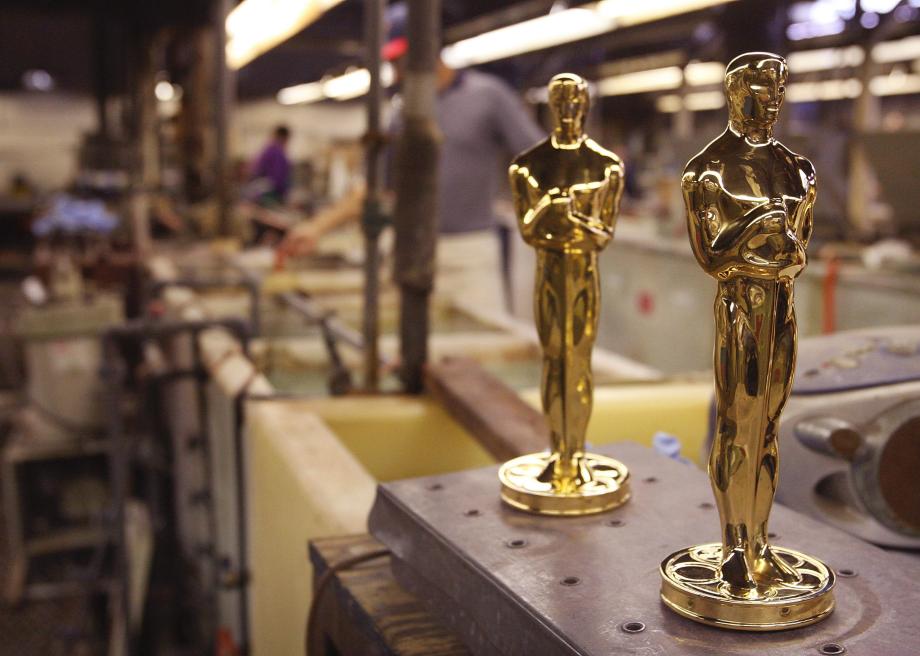
Photo by Scott Olson/Getty Images
Roman Mars’ podcast 99% Invisible covers design questions large and small, from his fascination with rebar to the history of slot machines to the great Los Angeles Red Car conspiracy. Here at The Eye, we cross-post new episodes and host excerpts from the 99% Invisible blog, which offers complementary visuals for each episode.
This week's edition—about trophies—can be played below. Or keep reading to learn more.
There’s a little trophy shop called Aardvark Laser Engraving down the street from our office in Oakland, California. It’s small but bustling, and its windows are stuffed to the brim with awards made of all kinds of materials and in any shape you can imagine: chalices, orbs, golfers, gavels, apples, and plaques. Plenty of plaques. They are engraved to award the Club DJ of the Year or the newest member of a local Freemason branch. One mysterious trophy just says “Rifle Expert.” There are plenty of heartfelt engravings to spouses, family members, and retiring co-workers.
Americans love trophies—giving them, receiving them, and watching other people give and receive them. This is what makes the Oscars such popular television programming, year after year. The Oscars’ “real” name was the Academy Award of Merit, but it’s now officially known by its nickname. There’s a lot of mythology around where Oscar came from, but legend is that humble Academy librarian Margaret Herrick took a look at the statuette and whispered, “He looks a lot like my Uncle Oscar!”
The first Oscar was awarded in 1929, and a number of different factories have manufactured the statuettes over the years. R.S. Owens & Co. has been making the Oscars in Chicago since 1983. It’s a bona fide trophy factory, one of the last in the U.S., with big kilns for glass plaques, wheeled carts full of castings and finished pewter statuettes, and rows and rows of industrial-grade buffers.
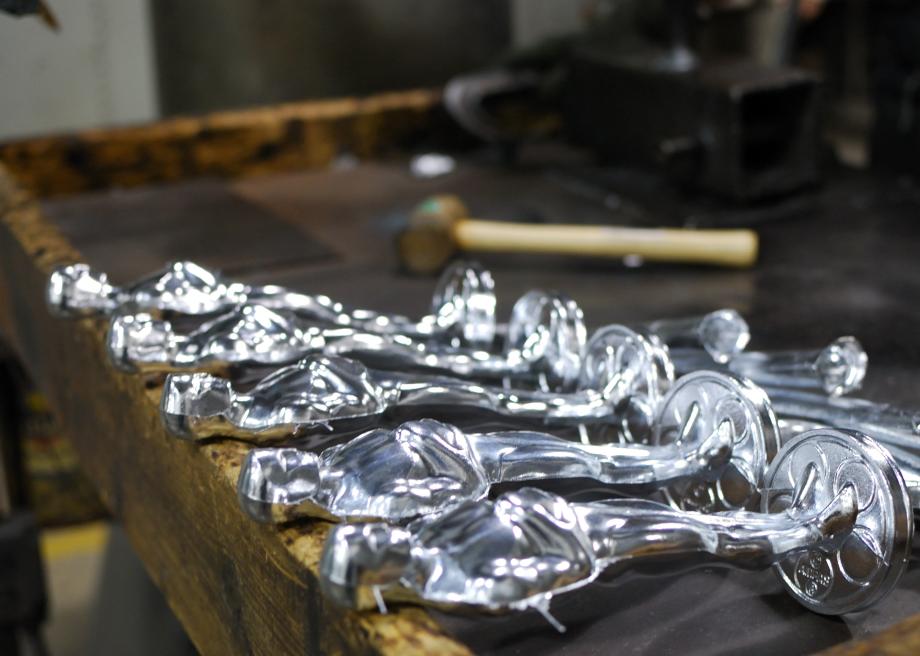
Photo by Mira Oberman/AFP/Getty Images
The design of the Oscar is simple: It’s a stylized gold man. Actually, MGM art director Cedric Gibbons originally designed the statue as a knight gripping a crusader’s sword. The Oscar only has one intricate detail: It’s standing on a five-sectioned reel of film, with each section representing the five areas of the Academy (actors, writers, directors, producers, and technicians).
The Oscar, as simple as it is, has been purposefully designed to be as desirable an object as possible. There’s more gold on it than in any other award by far, and all that gold is heavy and shiny. It takes about an hour to polish an 8.5-pound Oscar.
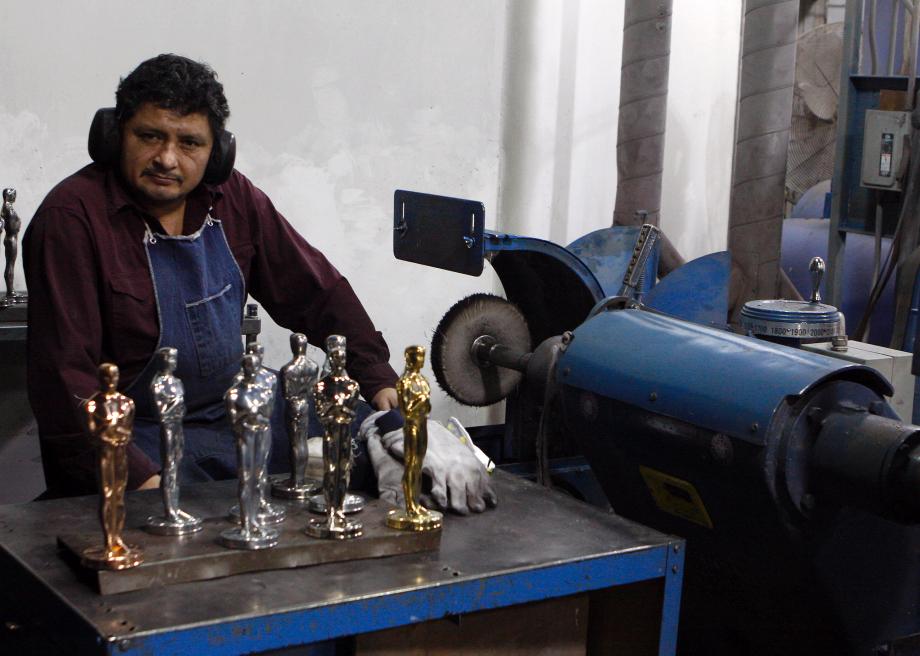
Photo by Frank Polich/Getty Images
There aren’t hard and fast rules for making an iconic trophy, however. The Oscar, sleek and simple, is a study in contrast with the trophy for the MTV Music Video Award. The MTV Moonman statuette is silver-cast and much more complex, featuring an astronaut in a detailed space suit, balancing on one leg.
The award was designed 30 years ago by Pat Gorman while she was working at the now shuttered Manhattan Design. (It was redesigned in 2013.) MTV used to run a little clip at the top of the hour that featured vintage footage of the moon landing, but instead of planting an American flag, the astronaut’s flag read “MTV.” Gorman decided to turn this moon man into the video award trophy, and she wanted to make the astronaut balance on one leg, so it would look as though he was floating.
Gorman drew up some sketches and sent them to a manufacturer. When she came back two weeks later, she found that the manufacturer had made an astronaut with both legs firmly planted on the ground, without an MTV flag. Also, for some reason, he was saluting.
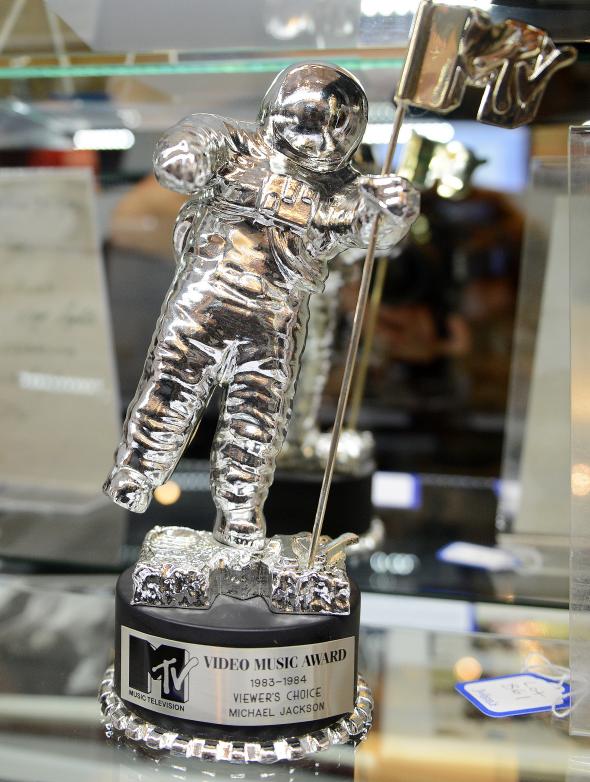
Photo by Robyn Beck/AFP/Getty Images
She was horrified. She told the manufacturer to try again and to stick to her sketch. When she came back in a week, he presented her with a statuette of man who appeared to be wearing a leisure suit. He had smoothed out every wrinkle in the space suit, and he was still not on one leg.
There was only one week until the first VMAs, and the statuettes had to be cast the next day. So Gorman just asked the manufacturer for clay and she and a friend, who was a potter, started building a mold themselves. They got the guy standing on one leg. “I watched a lot of Fred Astaire movies, and I’ve done a lot of tai chi, and there’s a thing about balance where if you line up the head, the belly, and the foot, you can balance in almost any posture. And so I just did that. And it was perfect,” Gorman said.
The manufacturer was really strapped for time at this point, so he only got around to making five statues, even though there were about 30 awards to be given out at the ceremony. The event organizers decided that an usher could take each winner offstage and fetch the Moonman each time, which meant they could just keep recycling those five awards throughout the night. This worked for a spell, until Michael Jackson messed everything up.
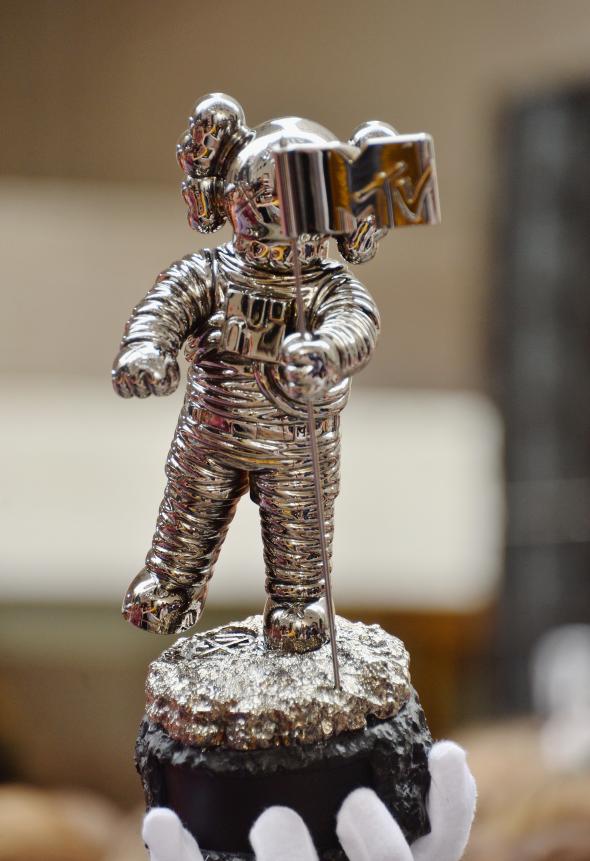
Photo by Mike Coppola/Getty Images
Jackson wasn’t actually present at the first VMAs in 1984, but he kept winning for “Thriller.” Diana Ross accepted the awards on his behalf, and because she was sitting right in the front row, she would go up and down the stairs before the usher could get the awards from her. The song kept winning more and more awards, until Diana Ross had all five statues in her lap. An usher was sent to sneak down to Ross to take the statues back. A tug-of-war ensued. These days, MTV has figured out how to get each winner their own personalized awards—which is actually a lot harder to plan than you’d think, because the manufacturers don’t know in advance who the winners are.
In the case of the Oscars, R.S. Owens engraves plates for all the nominees, so the Academy can quickly screw on the nameplate of the winner and destroy the others.
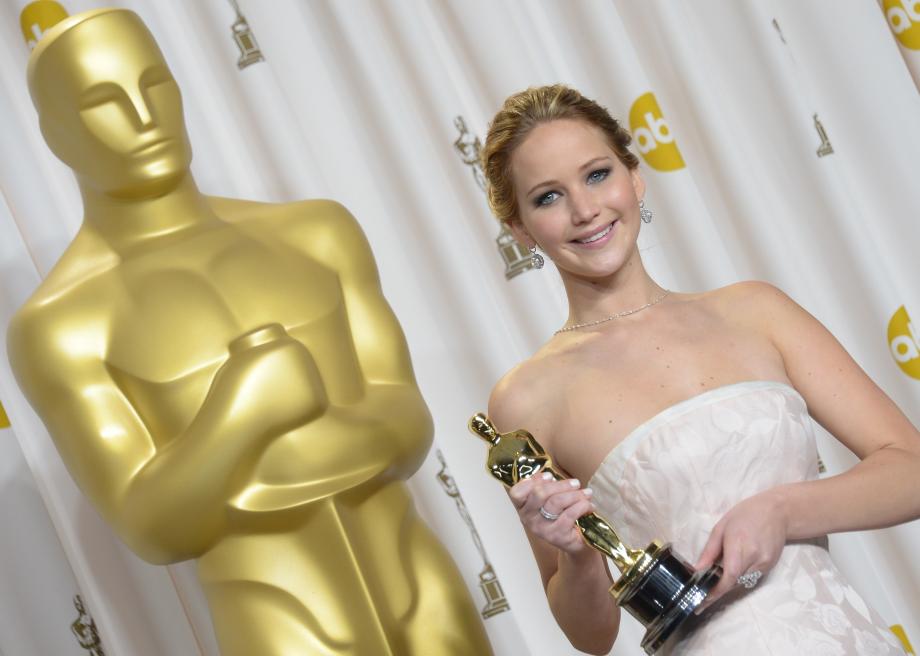
Photo by Joe Klamar/AFP/Getty Images
It’s a lot of wasted effort, but it’s that much more worth it for the winners to get awards that are already personalized. After all, the most important thing about an award is simply that it has your name on it.
To learn more, check out the 99% Invisible post or listen to the show.
99% Invisible is distributed by PRX.
